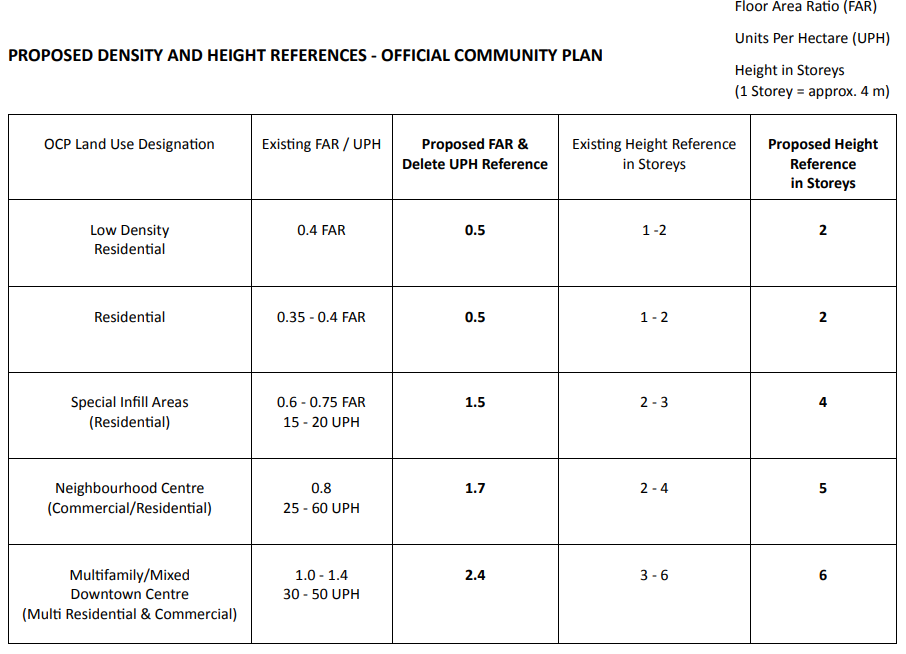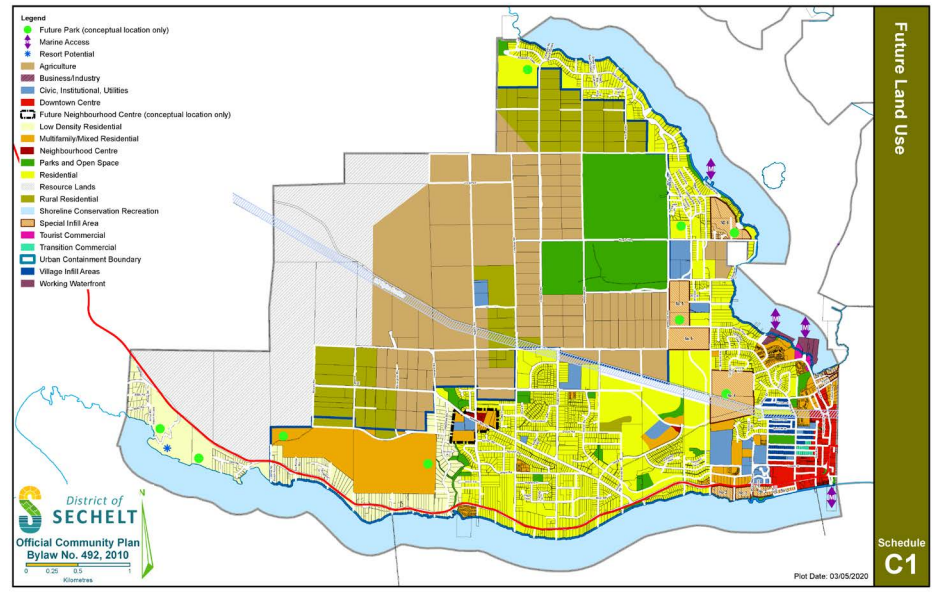Sechelt council passed first reading of Official Community Plan (OCP) amendments for density changes on Nov 15.
The purpose of the amendments is to increase the floor area ratio (FAR) and building height in four land use designations: special infill areas, neighbourhood centres, multifamily/mixed residential and the downtown centre.
The changes would allow for more units on affected lots by tweaking the lot density calculations.
The staff report on the agenda points out that several OCP amendments in recent years have demonstrated the bylaw is “not in line with the density demands for multi-family residential development in Sechelt.” While a broader OCP review is expected to start in 2024, these changes could start ahead of that and “set the stage” for the process, it said.
Pointing to the province’s Housing Supply Act requiring municipalities to streamline their development approval processes and recommendations from the Sunshine Coast’s Housing Needs Report, the staff report said, “The proposed OCP amendments would open up opportunities for higher density residential development and reduce some process barriers. Specifically, the inherent long timelines and uncertainty involved with OCP bylaw amendment applications would be lessened.”
“By changing some of the floor area ratio references in our OCP, what we're doing is signalling to the community and the development industry…we're opening our doors a little bit wider for more multifamily residential development, possibly mixed-use or residential above commercial ground floor,” said Kevin Pearson, Sechelt’s senior policy planner.
Pearson explained that the District of Sechelt uses both units per hectare and FAR in regulating density, “which makes it a little bit confusing and sometimes they don't mesh with each other,” which has led to similar amendments in the past.
The report states, “Using FAR instead of units per hectare can enable the development of more units and a broader range of unit sizes within the same building envelope or lot area. But if the measures are not in tune to current market demands, having FAR tied to units per hectare can result in a proposal meeting one measure but not the other.”

Coun. Dianne McLauchlan spoke against the recommendations, pointing out that the proposed FAR changes were almost double in some areas.
“I don't really feel that this is required at this point with the incoming information from the province in terms of homes for people or density infill or whatever we're calling it lately," she said. “We seem to get more information weekly on what that is but we don't know the details.”
McLauchlan asked that the special infill area be removed from the proposal, “I think it could encourage a lot of demolition of existing homes, a lot of speculation and that could be very harmful to that community.”
Coun. Adam Shepherd spoke in favour of the recommendations, stating that the proposed FAR changes would be the upper limit allowed.
“What will happen is the value of the land is hugely lifted through these rezonings and through these OCP changes," said McLauchlan. “That's great for developers and landowners, but it could also have a terrible tax implication on existing residents, where they actually have to pay a lot more property tax and be taxed right out of their homes.”
Coun. Alton Toth supported the recommendations and said, “Units per hectare needs to go from our OCP and even if we do adjust the FAR ratios at a later date, it's still progress towards removing units per hectare.”
The recommendations passed with only Coun. McLauchlan opposed.
Now that the first reading has passed, referrals will be sent to stakeholders and relevant agencies.
Jordan Copp is the Coast Reporter’s civic and Indigenous affairs reporter. This reporting beat is made possible by the Local Journalism Initiative.



